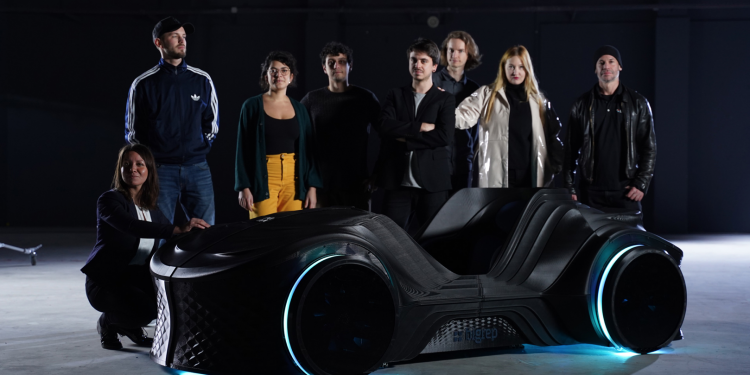The German company BigRep introduced a prototype of the compact urban electric LOCI podcar. The car is designed to demonstrate not only the advantages of eco-friendly transport but also the capabilities of the patented large-format 3D printers.
It is not known whether the car actually works at all, although a year ago the company presented a fully functional prototype of the NERA electric motorcycle. BigRep is not engaged in the production of electric transport or any transport. The company designs and assembles professional and industrial large-format additive systems, which makes the presented electric transport just an advertisement and the demonstration of capabilities of large-format 3D printers.
Why do they print means of transportation then? Probably it is because of this field is quite promising nowadays. For example, Local Motors, an American motor vehicle manufacturing company, prints not only small parts, but also large body elements. Local Motors promotes the idea of localized automotive microfactories. One of them is located in Berlin, where Local Motors Olli and Deutsche Bahn presented first unmanned 3D-printed minibuses.
The idea is that it is not necessary to open large scale factories and produce millions of cars, it is better to establish a local small-scale additive production of customized vehicles. Hence there are three completely different concepts of the LOCI electric car: one version is for Dubai international airport transportation, the second one is for the campus in Berlin, and the third one is for the “last mile” transportation in San Francisco.
“Last mile” is a term adopted from the telecommunications industry, it designates the route between the transportation hub and a final destination. In other words, if you rent a bike to get from the subway to work or home, the bike is a last mile transport. The transport can be of any type, but the key thing is its small size and autonomy.
LOCI is a concept version of a relatively inexpensive and compact single-person transport for such purposes. The Berlin model was really produced as a functional prototype and showed at Formnext 2019 in Frankfurt, while the Dubai and California versions are still at the rendered concept stage. The manufactured prototype consists of only fourteen 3D printed parts.
The overall dimensions of the car are 85 x 146 x 285 cm, and the largest part is 1000 x 600 x 700 mm. The maximum size of printed parts is limited by the build volume of BigRep Pro, BigRep Studio G2 and BigRep One 3D printers, capable to print parts of up to one meter long, using the widespread fused deposition modeling and fused filament fabrication technologies (FDM/FFF).
The body is made of Pro HT, a high-temperature resistant PLA material with a softening point of up to 115 °C, the airless tires are printed with thermoplastic polyurethane (TPU). The bumpers are made of PLX, polylactide optimized for faster printing. Beams and joints are made of polyamide.
Large-format 3D printers are capable of creating really big prints in just one go. Nowadays, many enterprises are thinking of acquiring such a machine, and even 3D printing enthusiasts are setting their sights on printers with a larger build volume. BigRep is not the only big player on the market of large-format 3D printers. One of the most prominent and popular models is Modix 120X. With its build volume of 1.200 x 610 x 610 mm, Modix 120X is capable of printing huge parts, which will be of great profit to enterprises and satisfy the most dedicated enthusiast.
If you’re interested in 3D printing, but don’t know where to start, check out this buyer’s guide. It’ll help figure out what machine you need.














